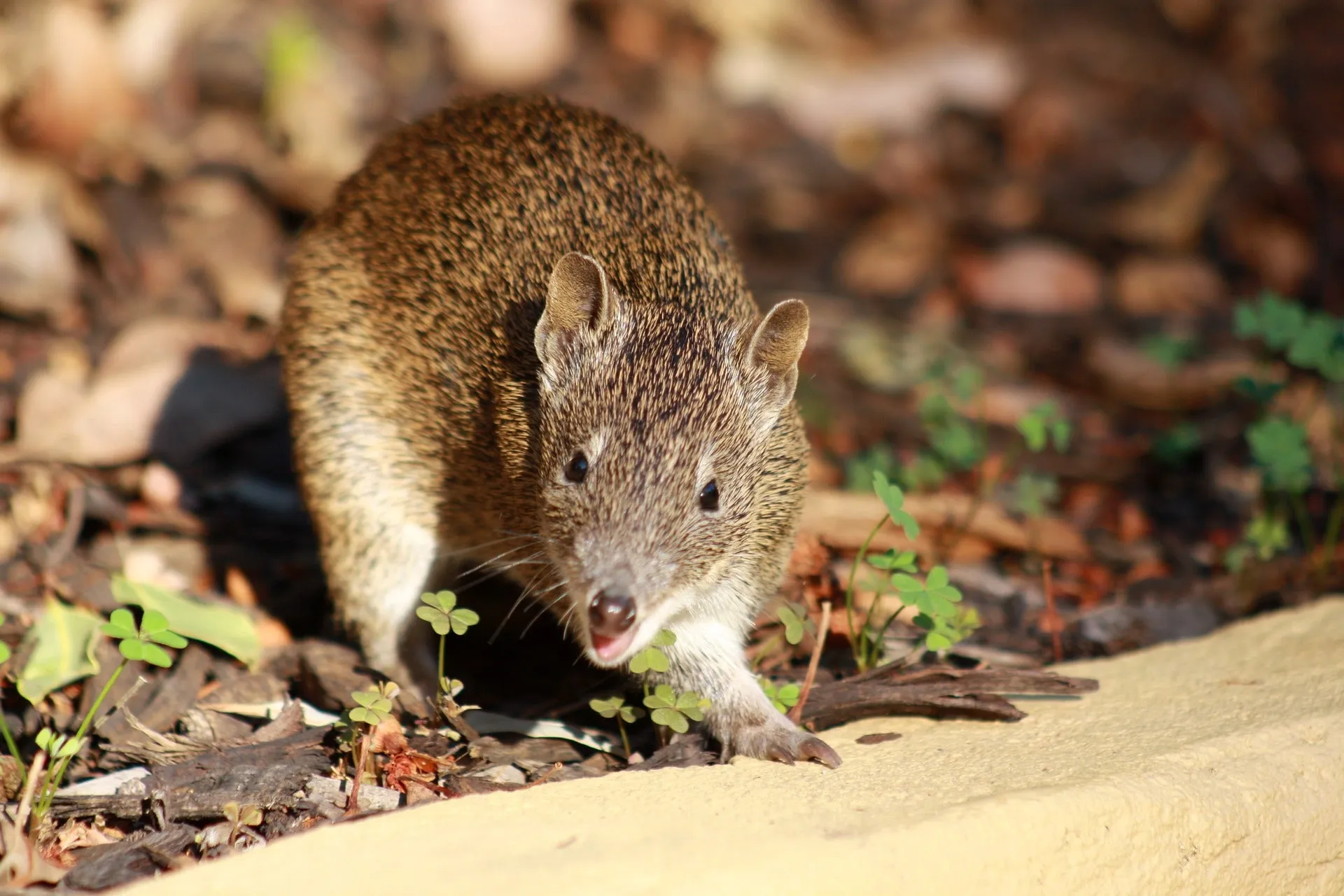Backyard bandicoots
Although there are 7 species of bandicoots known to inhabit Australia, only 2 species might be encountered on the Sunshine Coast.

Article and images by De-Anne Attard, conservation partnerships officer, Sunshine Coast Council
Have you ever noticed small conical holes and diggings on your property or Bushcare sites? These are likely the tell-tale signs of bandicoot diggings and activity. You may have been lucky enough to encounter one of these small nocturnal mammals digging around in the leaf litter and soil or walking through the undergrowth at night.
Bandicoots are typically solitary mammals that have sensitive noses, which they use to opportunistically seek out insects, insect larvae, lizards, mice, snails, fungi, grass and fruits. Although there are 7 species of bandicoots known to inhabit Australia, there are only 2 species which you might encounter in South East Queensland and the Sunshine Coast. See image 1: conical diggings of bandicoot.
The 2 types of bandicoots that you will encounter on the Sunshine Coast include:
- the northern brown bandicoot (Isoodon macrourus), which translates broadly as long-tailed equal-tooth, and
- the long-nosed bandicoot (Perameles nasuta), which translates to the notably nosed pouched-badger.
Although both species share some physical similarities and can share the same habitat, there are some distinct physical features that will help you tell them apart if you see them in person or on a fauna camera on your property.
Northern brown bandicoots typically have a shorter nose, short round ears, longer tails, dark and coarse fur and can be a heavier build (average adult 2kg). See some of these features in the below photos of the northern brown bandicoot.
See image 2 and 3: northern brown bandicoot investigating a log on a Land for Wildlife property at Curramore.
Long-nosed bandicoots are known for their long nose/snout, longer pointed ears, shorter tail, often paler fur (although not always) and slighter build (average adult 1.5kg). The long snout and large pointed ears are most noticeable in the below photos of the long-nosed bandicoot.
See image 4 and 5: long-nosed bandicoot walking through eucalypt forest and investigating a log on a Land for Wildlife property at Curramore.
Bandicoots can sometimes get a bad reputation for digging up gardens and the lawn on the edges of bushland areas, but these diggings are known to be a vital ecosystem service. The process of bioturbation is known to increase nutrient availability, microbial and fungal activity. This activity can then increase seed germination in the soil heaps/piles that have been turned by the bandicoots. A single bandicoot can dig up to 4 tonnes of soil per year which translates to some a lot of bioturbation of soils throughout our Bushland Reserves and properties throughout the Sunshine Coast.
So next time you see some bandicoot diggings or identify one on a fauna camera, I hope you have a better appreciation and understanding for which species you may be looking at and the significance of those little diggings.
For more information visit Bandicoots of SEQ - Land for Wildlife (lfwseq.org.au).
